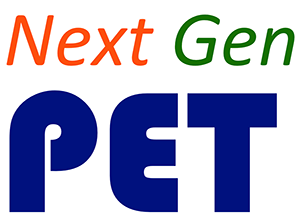Hybrid Lecture/Lab Implementation
Many universities have lab science classes that include two or three lectures per week along with a separate lab session. If your course follows this structure, you may wish to use a hybrid implementation that uses both Studio-style and Lecture-style class materials.
Since the materials are modular, they can be used in a variety of course structures. The best mix for your course will depend on your structure. With pedagogical thinking built into the design of the materials, using it can help prompt instructional behavior that is research-based, assisting any course reform.
Depending on your Hybrid implementation choice, it may make sense for students to use Studio materials, Lecture materials, or a combination (some units studio, some lecture). For example, if one individual is teaching both the lecture and lab, it may be possible to move through the content in sequence, alternating between settings and using the next activity for a topic. In this case, the best materials may be the studio materials supplemented by the use of instructor lecture slides when in a lecture setting. A hybrid implementation like this works, although at your site you may find ways to customize or improve the schedule or the delivery as you gain familiarity with the materials.
A less intuitive way to do a hybrid implementation is to schedule different content in the lecture and the lab. While this is an unusual approach, it solves the difficulty in coordinating lecture and lab schedules. This approach has been tested and works well (NSF DUE-1611738). It also highlights connections in scientific practices in each setting, a dimension of the NGSS on equal footing with content (“disciplinary core ideas.”) The schedule below is based on this implementation.
The full set of Next Gen PET materials consists of ten units, organized into five modules, along with a set of optional teaching and learning materials and optional planning and conducting investigations materials. The materials are published as separate units by Activate Learning, and you can order any number and sequence of units you wish, depending on the duration of your course and how you want to organize it.
For a one-semester (15 week) or quarter (10 week), with 36-40 hours of instructional time, you can plan to fully cover four or five units. In choosing which units to use from the five modules, keep the following information in mind:
- For the Developing Models for Magnetism and Static Electricity Module, either Unit M or Unit SE can be implemented by itself, independent of the other unit.
- For the Interactions and Energy Module, Unit EM can be implemented by itself, but it is a pre-requisite for Unit PEF.
- For the Interactions and Forces Module, Unit FM is a pre-requisite for Unit CF. Both units are usually implemented together.
- For the Waves, Sound and Light Module, either Unit WS or Unit L can be implemented by itself, independent of the other unit.
- For the Matter and Interactions Module, Unit PC can be implemented by itself, but it is a pre-requisite for Unit CR. Also, these two units are longer than the other units in the curriculum, so if you are teaching a physical science course you can include two or maybe three other units in addition to these two.
Example hybrid implementation: A semester-length physics course that includes both two 75-min lectures and one 110-min lab per week. The instructor orders both lecture-style and studio-style units from the publisher.
- In lecture part, all lecture-style units: M, EM, FM, CF, WS
- In laboratory part, all studio-style units: SE, L




